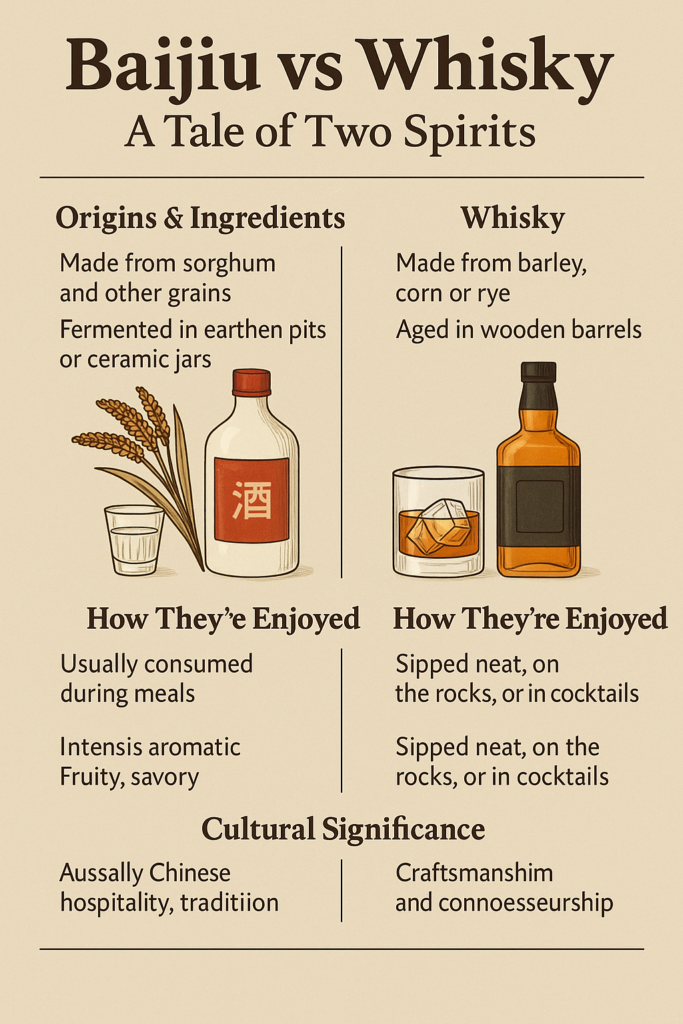When it comes to iconic spirits, Chinese baijiu and whisky sit at opposite ends of the world—and the flavor spectrum. Yet both are steeped in centuries of tradition and cultural pride. Here’s a quick breakdown of what sets them apart.

- Origins & Ingredients
Whisky, whether from Scotland, Japan, or the U.S., is typically made from grains like barley, corn, or rye. It’s aged in wooden barrels, which give it that familiar warmth, vanilla notes, and deep amber color.
Baijiu, China’s national spirit, is usually made from sorghum, sometimes with other grains like wheat or rice. It’s fermented in earthen pits or ceramic jars, often with wild yeasts, giving it uniquely bold and funky characteristics. - Flavor Profiles
Whisky is known for being smooth, smoky, woody, or even sweet, depending on its region and cask aging.
Baijiu, however, can be intensely aromatic, fruity, savory, or even umami-rich. Its flavor categories—like strong aroma, light aroma, and sauce aroma—can be a surprise for first-timers. - How They’re Enjoyed
Whisky is often sipped neat, on the rocks, or in cocktails, celebrated in quiet moments or social gatherings.
Baijiu is usually consumed during meals, especially at banquets and business dinners, often as a toast in small shot glasses. It’s a symbol of respect and celebration. - Cultural Significance
Whisky is associated with craftsmanship and connoisseurship. It’s collected, traded, and savored across the globe.
Baijiu, on the other hand, is deeply tied to Chinese hospitality, tradition, and social bonding. For many in China, a good baijiu toast marks the beginning of friendship—or the sealing of a deal.
In Summary:
While whisky whispers elegance and oak, baijiu roars with complexity and character. Both are reflections of their cultures, offering more than just a drink—but an experience.
Ready to try both? Start with an open mind—and maybe a chaser.
